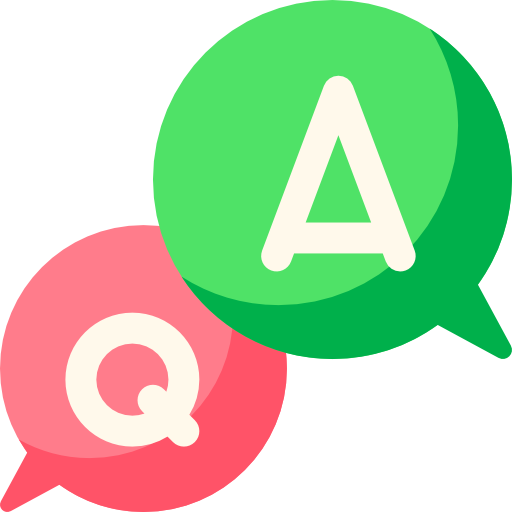
11 min
8
10.17.2022

In general, a stakeholder can be defined as an individual, a group of individuals, or an organization that can affect and is interested in a certain system. For instance, when we speak about a company, it can be staff, investors, partners, suppliers, and customers.
The definition of concerned parties in education refers to any party having an interest, implementing advanced ideas, or investing in education's successful development.
They affect decision-making directly and can improve the learning environment for the greater good. That is why it is important to learn about different types, the importance and role of each type, and stakeholder engagement.
 Why Are Stakeholders Important in the Educational Sphere?
Why Are Stakeholders Important in the Educational Sphere?
As the definition indicated, they have their interest in educational system development and well-being. So, it is obvious that their role is crucial.
Significant Role of Stakeholders
Each interested party forms an integral part of a specific school or the entire educational system. So, basically, all of them are crucial for the professional development of education, as they can have a positive impact or, on the contrary, lead to failure.
Different stakeholders, whether it be faculty, community members, or family, can significantly improve children's education environment if they collaborate and share their ideas, goals, and plans.
Potential Obstacles in the Educational Sphere
However, it often comes to a problem that those parties feel unvalued in some way and do not feel like expressing their needs or suggestions.
Educators, for example, work under pressure to meet the needs of the school board, parents, and community. This can be quite tense because it is often more important to comply with requirements rather than work creatively.
School board members recognize the importance of collaboration with the community; however, most of the time, they cannot reach out for help because they fear losing their expert reputation or do not know how to do that.
On the other hand, community members feel like they are unable to influence school board plans and have to adapt. Historically, they take the school community as leaders in decision-making.
Yet, concerned parties are like puzzle pieces. The entire picture will not be complete if one or some of the pieces are missing. When educators, school boards, parents, students, and other organizations unite the goals and efforts, it significantly improves the whole educational sphere. In that case, all parties feel comfortable and continue to invest time, money, respect, and love into children's future education.
Life in the Pandemic Environment
The issue becomes even more important in the current pandemic times. The USA had to put a lot of effort into dealing with Covid-19. All parties faced severe changes in numerous spheres, including education.
Educators were forced to adapt to those changes on-the-go all over the country, especially in big cities, such as New York. Plus, they were at greater risk due to work characteristics like, for instance, a large concentration of children at school. Students and their parents experienced anxiety, mental health issues, and financial difficulties; furthermore, they fear losing control and living in an uncertain future.
Therefore, it is of the utmost importance for parties to collaborate and serve children and young people and their future.
 Who Can Be a Stakeholder in Education?
Who Can Be a Stakeholder in Education?
In terms of education, there are many parties, but all of them are important when it comes to the common good. Let's take a closer look at different types and give some examples.
Internal vs. External Stakeholders
In general, stakeholders in education can be divided into two major groups:
Internal Parties
They are the groups of people within the school community. They are commonly students, parents or family members, educators, school board members, support staff, etc. Primarily, the success of a school depends on those community members.
External Parties
External parties, on the contrary, are groups of people or organizations outside of school. They can also take various actions that encourage school improvement. There are community members, government bodies, different local authorities, social workers, trainers, suppliers, agencies, and many more external stakeholders.
Examples of Concerned Parties and Their Interests
One of the most significant interested parties in the education sphere is the internal kind. Students, teachers, and parents are the educational process's direct participants. Therefore, they serve as primary examples.
Students
Students' role in education is crucial. Preschoolers, elementary students, freshmen, juniors, seniors, or college students are the first to be interested in getting an education.
Depending on the age, students require a different level of attention and different approach and education program. For example, children need more teacher assistance and study better when it is play-based learning. They are too young to know what is better for them, so it is essential to broaden their horizons and be ready to give any advice at all times. College students get higher education and require specialized training and in-depth knowledge. In this case expertise of the educator is more important.
Parents
Following students, another group consists of parents and grandparents, uncles/aunts, older brothers/sisters/ cousins, close friends, neighbors, sitters, or other relevant people.
Parents strive to get their children a good education and are involved in the process of education and provide support to students. Parents help teach children as they help do the homework, read, write, and learn the material. They monitor topics and lessons taught at school and fill the gaps in understanding, if any.
Moreover, parents control social development and behavior, support a healthy lifestyle, and foster a comfortable environment for children outside of school.
Lastly, parents aiming to provide all the best to their kids tend to influence education advancement and are ready to help school leaders increase student achievement.
School Members
School, as a whole, is an interested party in providing top-class public education. And that works for all, whether it be elementary, middle, or high school.
However, among school members, there are other groups of individuals that can be considered separately.
- Teachers work on the curriculum and prepare daily, weekly, and annual lesson plans. They focus on teaching children everything they need to know this year and advancing their knowledge level well enough to progress to the next year. They also help children adapt and solve issues between different individuals in the class.
- The school board is responsible for ensuring high-quality education and learning materials for students in their school district. It also ensures comfortable terms of work for teachers and all the school staff. Moreover, it interacts with different local authorities and maintains the reputation of an expert in the sphere.
- Sometimes different professionals, such as social workers, volunteers, or psychologists, are also involved in the process. They deal with special children and schools to support and help them obtain new skills and knowledge.
- Support staff maintains a comfortable environment by providing cleaning services, transfers, real estate protection, etc.
Government
Different governmental structures can be stakeholders in education - like, for example, the Ministry of Education, the Ministry of Health, and various policymakers. They regulate and monitor the overall educational strategy, promote school health and nutrition advocacy nationally and regionally, support stakeholder engagement, and develop partnerships with key parties.
The education system can affect several officials, such as city councilors and state representatives. For example, some voters prefer to decide based on the governmental support of higher education. So, that is another important point.
Community
Community leaders pay close attention to the education system. They are interested in a solid educational program that helps students become smart, self-confident, determined, and successful. They need schools to prepare future leaders and community members that will then build a stronger community. Community engagement promotes future top managers, business owners, or employees to have the best knowledge and skills.
Other Organizations
There are also other organizations that supply educational materials, food, cleaning products, and services that affect the quality of the environment in schools.
Here is an example demonstrating the ways of collaboration between different concerned parties for the education sphere's welfare. Suppose the local school council would like to improve students' interest and deepen their knowledge in science and technology in the entire district. The city administration and community representatives help raise funds to meet this goal because they are interested in raising future specialists to build a healthy and intelligent nation. According to the new requirements, school, particularly teachers and principals, adapts the program and introduces additional activities, such as scientific contests, fairs, school nights, or field trips. Students learn according to the new program to enhance knowledge and future perspectives. And their parents support all school activities implementation for the good of children. Moreover, involved suppliers provide appropriate equipment and studying materials, and so on. All the parties cooperate to reach the same goal most effectively.
 How Do Stakeholders in the Educational System Interact?
How Do Stakeholders in the Educational System Interact?
Stakeholder engagement in education is very common across the USA. It enables unhindered connection and mutually advantageous communication between education leaders and individuals interested in education, such as teachers, parents, students, etc.
To be successful, stakeholder engagement needs to be conscious, comprehensive, and systematic throughout the process and include decision-making options.
The engagement may apply to the following topics: use of assents, school feedback, planning of innovations, strategy set-up, parents' engagement, and more.
Process of Engagement
Stakeholder engagement does not mean that they will make group decisions. Their role is to make sure that their ideas, suggestions, and interests are well-heard and taken into account throughout a more transparent decision-making process.
Basically, there are four steps performed throughout the engagement process:
- Planning: An initial plan is necessary to determine which goals and plans will be affected and which participants will be there during the process. Moreover, it is important to gather thorough background information and prepare the list of necessary questions.
- Participation: It is the most comprehensive engagement phase involving a discussion and gathering of all possible ideas and suggestions from each other. This step also includes prioritization of the obtained information.
- Analysis: The third step is probably the most time-consuming. It requires consolidation of all the input data, the establishment of new goals and a description of the new course, and a relevant list of actions.
- Sharing: This step includes a detailed proposal completion and presenting it to the relevant parties with the necessary argumentation and comments.
The Benefits of Stakeholder Engagement
Each time education leaders need to make decisions. They can choose one of the three options: inaction, relying on their own opinions, or reaching out to concerned parties. The last option has several benefits to consider:
- Possibility to make significant decisions quickly and at a lower cost;
- Further support from interested parties participating in the decision making;
- Increasing awareness and obtaining more ideas;
- Better outcome;
- Improvement of trust and respect for the educational leader.
Engagement is probably the best option to make a major decision as it is time-consuming and risk-eliminating. Moreover, it comes with a bonus of further relationship improvement.
 Conclusion
Conclusion
Summing up, different stakeholders play a crucial role in the education system nowadays. All of them have their own specific interest and are strongly motivated to assist the sphere's development.
Therefore, stakeholder engagement can cause a strong positive impact on the system advancement, especially in the present circumstances of a pandemic. That will help the educational sphere evolve, while students will continue to get high-class and in-depth knowledge and skills to build a bright future.


